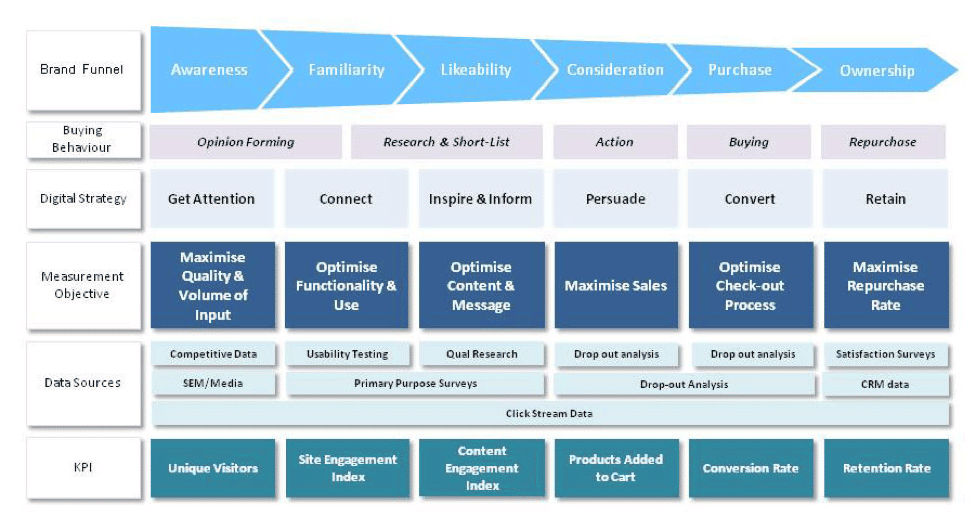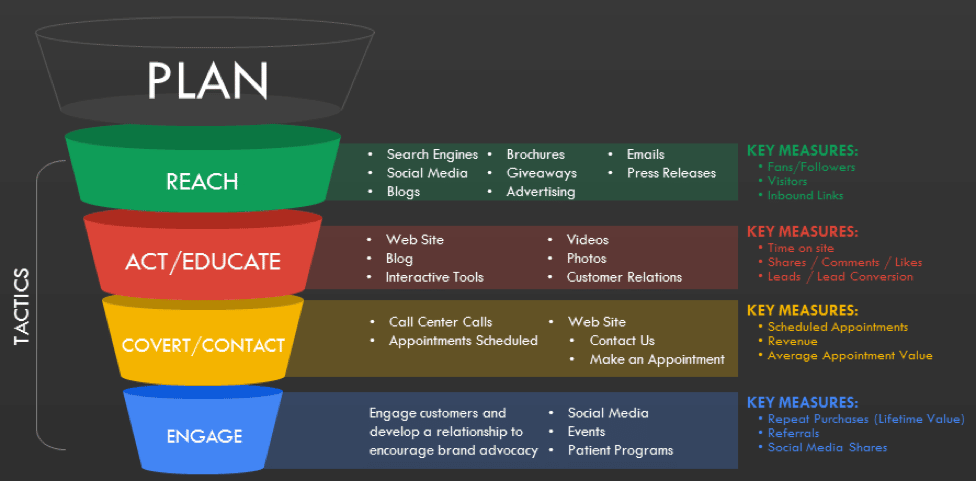One of my favorite analogies to use with my clients is: Executing marketing without proper analytics in place is like getting in your car and driving without a destination.
Recently, I spoke with a marketer who had spent an entire year working with one of their clients executing media buying/planning without any proper analytics in place. In other words, their client has been spending money without knowing any of the following marketing metrics:
- Which marketing campaigns and channels yielded the most leads generated, engagement and sales.
- Visit to lead %.
- Lead to customer %.
- LTV of a customer.
- RoAS (return on advertising spend).
- CAC, CPA, CPL.
Analytics should be at the heart of your marketing initiatives. It enables you to understand what’s working, what needs improvement, where you should be spending more of your marketing dollars and where you should stop spending.
Here are four reasons why marketers fail with analytics:
1) Executing without a solid strategy
Your marketing strategy should easily be explained in one sentence without having to dive into too many details. For example, “Marketing strategy: To increase lead generation by 200% and retention by 70% by December 2016.”
A marketing strategy paints the vision of what you’re trying to achieve, aligned with sales objectives. By having a solid strategy in place, you also know the following:
- Target demographic broken down by buyer personas and verticals. This will help you understand which personas and verticals yield the most revenue to your company, what their purchase journey looks like, what they care most about and how you can execute tactics to solve their needs as well as their pain points.
- The right marketing mix. Honing in on the top executions that you will help you meet your objective is key to success. For instance, you may decide that PPC isn’t the right road for you, but first, you have to take advantage of readily available data by implementing keyword research, competitive research, and popular content topics.
- KPIs you will be tracking and measuring. Identifying these metrics will help you figure out which set of analytical tools you will need to explore to ensure you don’t miss a beat.
- Alignment with business and sales objectives. Have a clear path of how a marketing qualified lead (MQL) becomes a sales qualified lead (SQL) must be identified. And knowing where in the sales process it makes sense to have marketing injection points will only help synchronize efforts.
2) Lack of discipline
Input the necessary processes and people in place to help. For instance, you may not be the most tech savvy person, so having a tech person who understands how different technologies can work together will be helpful. That way, you can focus on overseeing the framework of your analytics, but not get bogged down with the technical details of how to connect all of the dots.

Further, create a dashboard that explicitly lays out weekly, monthly and quarterly data. Having the ability to holistically visualize and utilize collected data points will help you get into the cadence of incorporating analytics as a key role within your marketing initiatives.
3) Not asking the right questions
Don’t get caught up with asking broad questions around website traffic, impressions, and clicks. Instead, focus on asking questions that actually mean something to your company. Here are a few examples:
- “We spent $5,000 on advertising this month. How many qualified leads did we get out of it? How many became customers?”
- “What type of content should we be pushing out to capture lead information among c-level executives within manufacturing?”
- “We drive 200 people to our landing page a day – how many have converted into leads and of that, paying customers?”
See how specific those questions are and how relevant they are to you being able to further calculate ROI?

4) Investing little to no time in learning
Don’t use the excuse of not being well-versed with analytics as a reason why you’ve failed to do anything about it. Put in the time needed to learn what you should be tracking, tools you can explore, and how you can present the data to your team.
Check out these resources for starters:
- The Absolute Beginner’s Guide to Google Analytics
- HubSpot’s Analytics Library
- SalesForce Reporting and Analytics Library
Final Thoughts
Without analytics, your company is vulnerable and bound to repeat the same mistakes. Lacking quantitative data inhibits you to make the best decisions possible, especially if you only rely on implicit data points.
Overtime, this will only cause you to overspend in areas where you could’ve saved and overlook channels you should’ve taken advantage of.






One Response